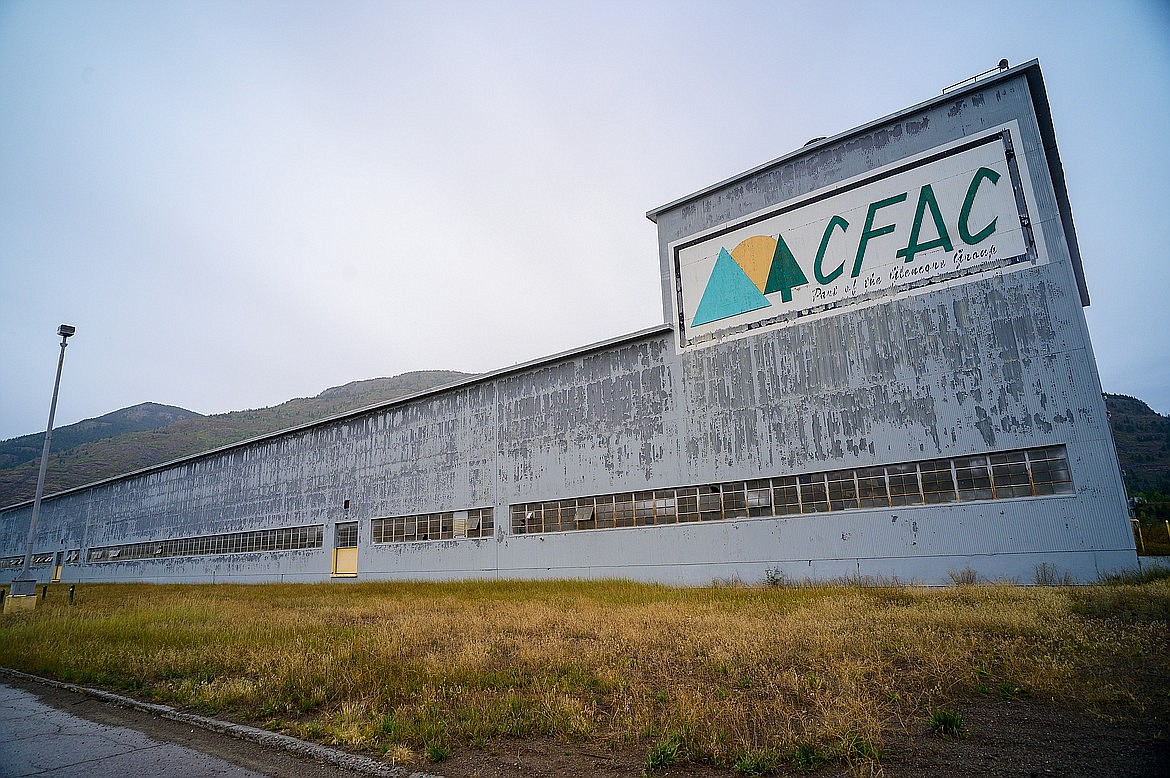EPA releases proposed Columbia Falls Aluminum Co. cleanup plan
The Environmental Protection Agency on June 1 released its proposed action for cleaning up the Columbia Falls Aluminum Co. Superfund site.
The plan has several facets, but the main thrust is to contain the worst dumps by fully surrounding them with a slurry wall to stop contaminated groundwater from leaching out.
The wells at the former wet scrubber sludge pond and the west landfill have the worst contamination. Test wells near them show very high concentrations of fluoride and cyanide from spent potliner that was dumped there for decades.
Potliner is a carbon material that, as its name implies, lined the pots used to smelt aluminum.
Until at least 1970, possibly longer, potliner was dumped at the almost 8 acre west landfill, which was unlined. Over time, the cyanide and fluoride leached from the potliner into the groundwater.
The other main polluter is the wet scrubber sludge pond, which is about 10 acres, where wastewater from the plant was pumped into an unlined pond. It also represents a major source of contamination.
The slurry wall, ranging from 100 and 125 feet, would encompass both of the above-mentioned dumps. In addition, the west landfill and wet scrubber pond would be capped with a low permeable material to keep more water from seeping into them.
According to the feasibility study, most slurry walls are constructed of a soil, bentonite and water mixture. Bentonite is an absorbent clay, often used to seal man-made ponds. The bentonite slurry is used primarily for wall stabilization during trench excavation. A soil- bentonite backfill material is then placed into the trench, displacing the slurry to create the cutoff or containment wall. Walls of this composition provide a barrier with low-permeability as well as chemical resistance.
In addition, eight pairs of extraction and monitoring wells would be drilled. Some within the slurry wall boundary, others outside of it. Contaminated water could be treated onsite for fluoride, cyanide and arsenic. Arsenic is another poison which is commonly found onsite, as are other contaminants.
The wells would be used for both monitoring the effectiveness of the slurry wall and if the wall doesn’t work as designed, treating the water.
“If pumping is needed because groundwater elevations in the interior and downgradient monitoring wells indicate the slurry wall is not performing as designed, the groundwater extracted from the interior of the slurry wall will be treated and then discharged into infiltration basins,” the document notes.
Contaminated soils at the site in several locations would be scraped off and consolidated in either an existing landfill already on the site, or possibly in a new one. Soils in some locations at the plant site are contaminated with heavy metals, PCBs and polyaromatic hydrocarbons.
The contaminated soils are located in several locations at the site.
The site has seven landfills. But some meet modern standards and could be used for taking contaminated soils on the 960-acre site.
All told, the slurry wall alternative, including moving the soil and putting new caps on landfills, would cost about $57 million.
It would take between six to 12 months to design, but could be constructed in one or two construction seasons. The groundwater monitoring and potential treatment would take an estimated 30 years, with a review of its effectiveness every five years.
It would also require ongoing maintenance.
The cleanup plan is similar to other cleanups at aluminum plants in Washington state, which also contain the waste in landfills on site while treating the groundwater for cyanide and fluoride.
The EPA looked at digging up the contaminants and hauling them out to an approved landfill in Oregon, but discounted the idea, noting that would take about 60,000 truck or train loads to haul the estimated 1.2 million yards of waste away in a project that would take four to five years. The contamination would have to be pre-teated and digging up the soil could also expose workers to dust contaminated with cyanide or possibly cyanide gas, which is deadly.
The waste would also likely require pre-treatment as well.
Still, some residents in Columbia Falls maintain the only way to truly clean the site up is to haul the waste away.
None of the contaminants have thus far shown up in residential wells, the closest of which are just under a mile away.
But the EPA does note that deed restrictions against drilling water wells near the plant are in order.
A public meeting will be held on June 28 from 6:30 to 8:30 p.m. at the Columbia Falls Town Hall, City Council Chambers, 130 Sixth St. W., Columbia Falls, to describe the proposed plan and solicit comments before a Record of Decision Amendment is released later this year.
Other in-person outreach opportunities will also be provided during the comment period by EPA staff and technical advisors with the Technical Assistance Services for Communities program. These opportunities will include public meetings on June 21 and July 12 at the Columbia Falls Town Hall, City Council Chambers, at noon and 6:30 p.m. on both days.
Both written and oral comments will be accepted at the public meeting on June 28. Written comments can also be sent by email to Missy Haniewicz at haniewicz.melissa.m@epa.gov or by standard mail to Missy Haniewicz, U.S. EPA, 1595 Wynkoop Street, Denver, Colorado, 80202.
The EPA will review and consider all comments and will either move forward with the preferred alternative, modify it or select another alternative. Comments will be addressed in a Responsiveness Summary in the final Record of Decision for the site, the agency said in a release.


